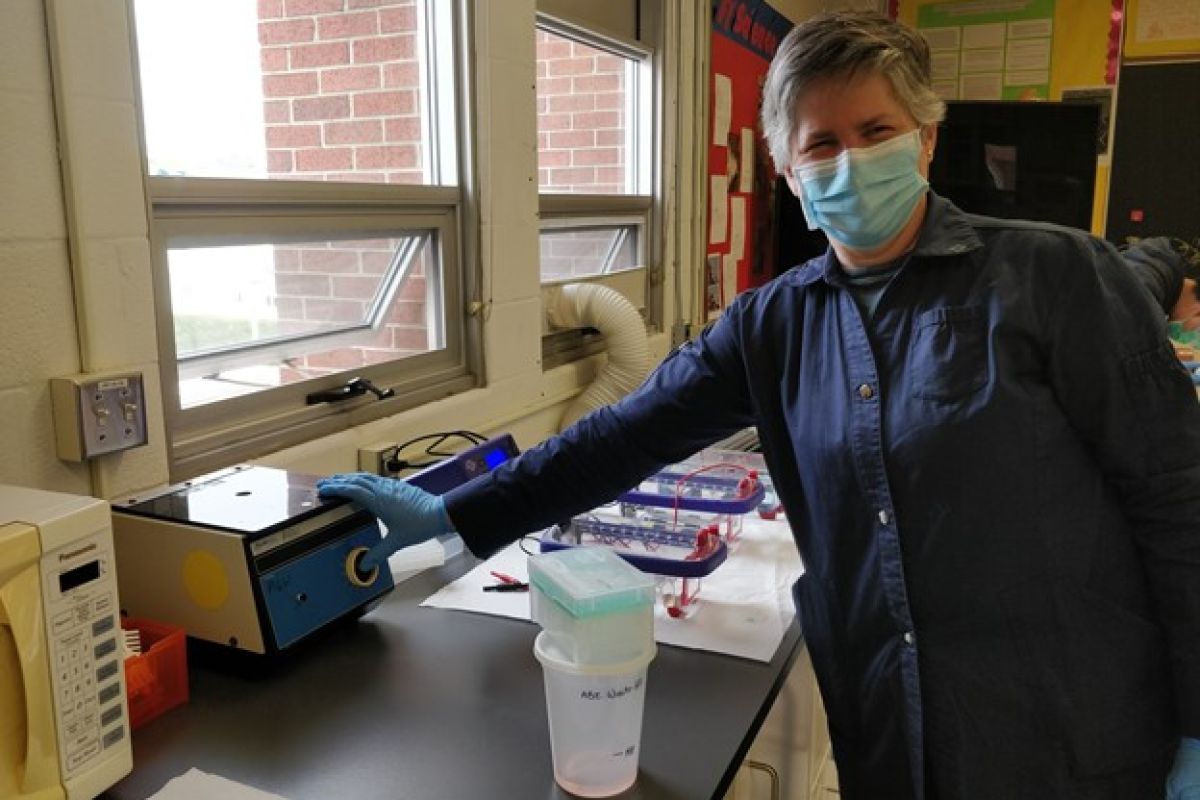On a Zoom call in November, Maria Niño-Soto held up her lab schedule, and it looked more like a complex conference scheme than a classroom set-up. It showed three cohorts, each receiving a lab-driven curriculum spread out over different days and platforms, to accommodate students working virtually or coming into her class for 12th-grade biology at University of Toronto Schools.
“It really is like organizing a conference,” she says. “You have to have sessions for people all with different needs, and trying to coordinate it all is beyond what teachers are trained to do.” And yet, that’s what Niño-Soto and many other ABE teachers have been doing, adapting with remarkable speed and grace over the past several months to the new reality teachers face during the global COVID-19 pandemic.
In Canada, the schools shut down for 3 weeks for their usual break in March 2020, and the teachers and students did not return to in-person learning for the rest of the school year. In September, they re-opened with a new cohort-driven teaching model.
Over the summer, ABE Canada sprung into action, anticipating what the needs would be for the new school year should they return to in-person learning—doubling all the equipment to enable students to have their own kits (to avoid sharing equipment) and making available new training to their teachers. While ABE participation has slightly decreased, the program is still going strong in many schools throughout the region. Most importantly, the teachers have been doing whatever it takes to make it all work, says Kristina Han, site coordinator at ABE Canada.
“Our teachers are passionate,” Han says. “They are all very driven to make the labs work in their classroom and to provide enriching experiences to their students.” Beyond that, she says, they are driven to help their fellow teachers adapt as well—sharing content and sharing what they learn along the way with the ABE community.
Niño-Soto took part in the August 2020 professional development institute (PDI), sharing with the other teachers potential strategies for both virtual and in-person learning. The ABE Canada summer PDI was the first fully virtual PDI to cover the entirety of the ABE core curriculum.
“We adopted an alternating synchronous/asynchronous session model over 2 days,” Han says. “This allowed participants to work through LabXchange pathways and longer simulations at their own pace during the asynchronous sections, while the synchronous sessions were more focused on logistics and student-engagement strategies.” In one of those synchronous sessions, Niño-Soto ran through contingencies for how teachers could structure ABE labs with a return to partial in-person learning.
Since then, Niño-Soto has developed an innovative way to concurrently teach her three cohorts (one virtual and two in person). While some of her students are in the lab in person using the individual lab kits provided by ABE, she engages others in preparing or answering questions or doing pathways on LabXchange. She then repeats it again for the other half of her students later in the week. In her school’s university-style model, the biology class runs September through December, and the students meet with her for 5 hours a day twice a week on average.
The increase in instructional time is great for teaching biology, Niño-Soto says. And the use of individual kits is promoting a new type of independence in her students. “The kids who normally would not be excited about science, or think they don’t have the skills, were super impressed they could do this all by themselves,” she says. “It unexpectedly provided an opportunity to gain self-confidence.”
For example, one of Niño-Soto’s students who was previously interested in art is now considering biological sciences, even looking forward to exploring the Amgen Scholars Program when she goes to university. The University of Toronto Schools is for high-achieving students. The school attracts a diverse student body, with about 18 percent of students receiving financial support.
Indeed, some teachers are using the extra virtual teaching time as a way to further expose their students to opportunities within biotechnology and science. Sarah Rossi, from the Peel District School Board, participated in the ABE Canada PDI this past summer. While she hopes to teach the labs next year, in the meantime, Rossi held a series of online career panels for her students. With support from Han and the ABE site, she has hosted 13 guest speakers across a variety of careers both at and beyond the bench—including a NASA systems engineer, a social media marketer, biotechnologists, a school technology lead, computer programmer, doctor, military pilot, and public communication manager.
“All my students want to be doctors, lawyers, or engineers,” Rossi says. “I think it important to introduce them to careers that still involve the same skills, subjects, and motivations but may be less heard of.”
Both Rossi and Niño-Soto are finding the adjustment to the current school year grueling, with many extra hours of preparation time, but still rewarding. One of the biggest challenges is just getting their students to show up.

Niño-Soto says she feels lucky to have the resources she does at her school to provide equitable opportunities for all her students. Growing up in Venezuela, where she pursued veterinary medicine before moving to Canada, she knows firsthand the extra burden created by a lack of resources. That’s in part why sharing what she is learning with others is such a big priority.
ABE, she says, is giving her students a vital outlet to still engage in hands-on science. “This particular group of students, because they are in grade 12 really, is anxious about their future,” Niño-Soto says. “The labs provide them with the opportunity to taste what it's like to do things and to explore their interests. They provide an escape with purpose—and a lesson in resilience and persistence.”
